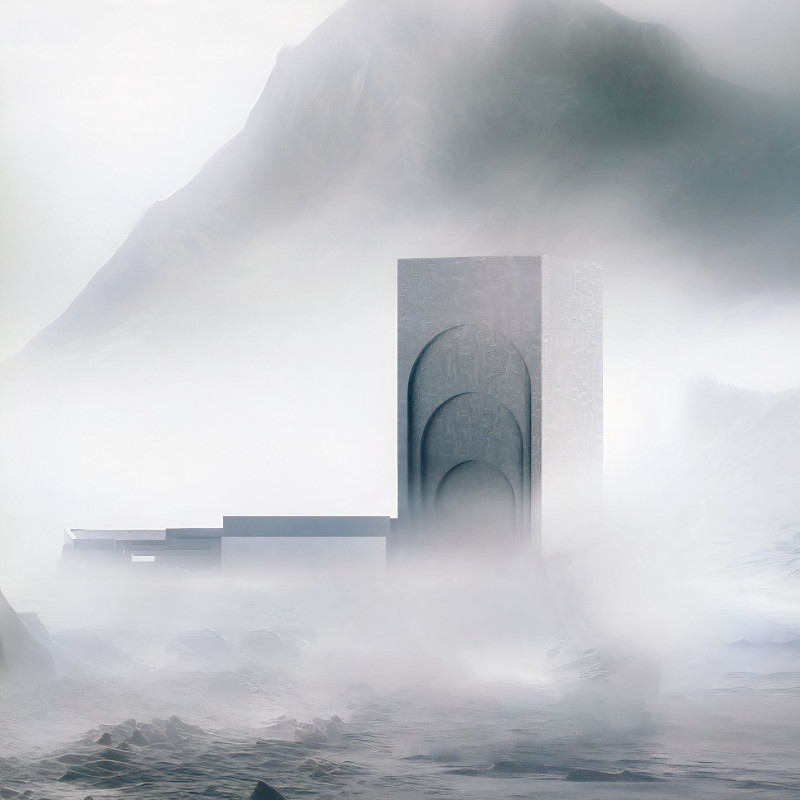5 key facts about this project
Located in a remote landscape defined by rugged topography and dense atmospheric fog, Humanity Grave is conceived as both a memorial and a repository for human knowledge. The structure is intended to prompt reflection on humanity’s ecological footprint and philosophical legacy. Through its spatial program and siting, it invites contemplation of the human condition in relation to the environment and the cosmos.
Materiality and Form
The building’s angular form and monolithic presence evoke a sense of permanence while acknowledging human fragility. Constructed from reinforced concrete, natural stone, steel, and glass, the material palette reflects durability and environmental responsiveness. Glass apertures introduce controlled natural light, establishing visual and symbolic connections between interior spaces and the surrounding terrain. The overall composition is grounded in a minimalistic aesthetic that emphasizes structural clarity and spatial restraint.
Program and Spatial Experience
The interior is organized into distinct yet interconnected zones. The information chamber functions as an archive of human achievement, housing artifacts and digital records. A secondary space, designated as the human order chamber, facilitates philosophical engagement with ecological and existential themes. Supplementary areas accommodate public discourse and events. The design supports a layered user experience—moving from introspective solitude to collective engagement—reinforcing the project's thematic focus on remembrance, education, and environmental accountability.



















































